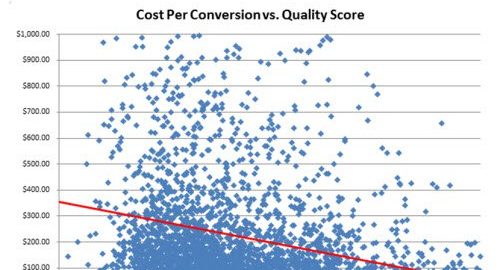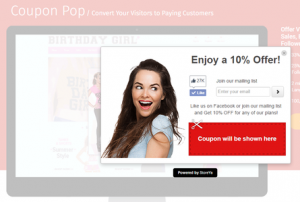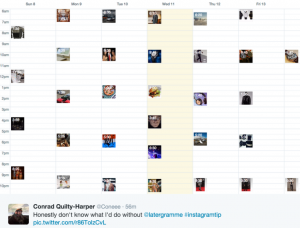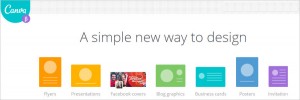Improving your Quality Score, increasing your clickthrough rate (CTR), reducing your ad spend without compromising results… these are all top-of-mind for PPC marketers using AdWords.
Recently, we increased our CTR by 28.1%, improving our Quality Score from 5.56 to 7.95 (out of 10). How’d we do it?
Through single keyword ad groups, a little-known tactic that smart marketers are using to maximize their PPC spend.
First, what is Quality Score?
Quality Score is one of the most important metrics within your AdWords account as it has a significant impact on the cost per conversion you pay.

When Wordstream analyzed over 30,000 accounts, they found that increasing your Quality Score by even just 1 point could result in a 16% decrease in your cost per conversion.
So, what is Quality Score? At a high level, it’s made up of 3 distinct factors:
- Expected CTR.
- Landing page experience.
- Ad relevance.

A significant amount of research has been conducted on the weight of these factors in the Quality Score algorithm.
Wordstream once found that CTR and Quality Score were directly correlative.
Similarly, AdEspresso found that increasing ad relevance and CTR drives down the cost per click (CPC), likely signalling a Quality Score improvement.

Adalysis recently found that ad relevance and CTR make up 61% of the Quality Score algorithm.

What are single keyword ad groups?
Single keyword ad groups are, as the name suggests, ad groups with just one keyword in them.
At the moment, you likely have several keywords per ad group. In fact, until recently, Google suggested that you add 10-20 keywords per ad group.
But the problem with doing this is that it’s very difficult to write ads that are highly relevant to all of the keywords within your ad group.

That’s what is holding you back from achieving the high Quality Score you’re looking for.
For example, you can see below that there are several different keywords that trigger one ad…

You will notice that the ad is not actually all that relevant to all of the keywords. It would be impossible to write an ad that is highly specific to all of those keywords.
To show you how this translates, here is Google’s search results page for the term “women’s red dresses”.

You will see that the only advertiser that has written a highly specific ad is Asda, who has the search term (“women’s red dresses”) right in the headline and in the display URL, making it appear the most relevant.
With single keyword ad groups, there is only one keyword that can trigger your ads, so you don’t have to create generic, vague ads.
Instead, you can actually include the keyword that people are searching for within your ad copy, improving ad relevance, just like Asda.
The impact is that your increased ad relevancy triggers a CTR increase and, eventually, a Quality Score increase.
How Single Keyword Ad Groups Improve Quality Score
At Clicteq, we recently conducted a study that looked into the impact of implementing single keyword ad groups. We paired this with an ad copy testing strategy, as well.
We found that single keyword ad groups increased CTR by 28.1% over the two month test period. They were also instrumental in improving Quality Score from an impression weighted average of 5.56 to 7.95 (out of 10).

The graph below shows the improvement in CTR from 3.85% to 4.93%.

The research was carried out on an AdWords account in the education sector.
During the test period, the average position of the ads stayed constant at 2.4, which would suggest the improvement in CTR came from implementing the single keyword ad groups. There were also no changes to the ad extensions or keyword set, which could result in an increase in CTR, polluting the data.
Ensuring Data Reliability
With PPC, testing works a little differently. The main issue with ensuring that test results are reliable is the fact that search results are never static… they are all dynamic.
For example, if you search for something and then refresh the page, you will find that there are different ads. Most advertisers have their ads showing in 50-80% of searches, depending on their budget.
Most advertisers have several different ad copy variations, too. So you are likely to have 40 or so different ads in a pool. Then your ad will be selected by Google to show in some select searches along with ~10 other ads.
So, you tend to get some pollution and you have to work with an average.
The key things to take into account are:
- The average position, which makes the biggest difference to CTR.
- The number of extensions shown.
How to Implement Single Keyword Ad Groups
Before we get into how to create single keyword ad groups, it is worth noting that you may not want to put every single keyword into a single keyword ad group.
Creating single keyword ad groups is very time-consuming as you have to create two tailored ad copy variations for each of your keywords.
Instead, you should consider applying the 80/20 rule. This states that 80% of the output of any given campaign is achieved through 20% of the input.
In the case of AdWords, you are likely to find that 80% of your conversions are generated by your top 20% of keywords. So you will want to focus your efforts on those keywords and add them to their own single keyword ad groups first.
The 4 Step Single Keyword Ad Group Process
Now, on to the step-by-step process.
Step 1: Search Terms Report
Go into your AdWords account and navigate to the Search Terms report by clicking on the Keywords tab.

Step 2: Prioritize
You need to order your Search Terms report by the number of conversions. You can do this by clicking on the conversion column header as shown below.

Once you have done this, you will now want to add all the top performing keywords to their own single keyword ad groups.
Step 3: All Match Types
You will want to add the keyword in all three match types (i.e. exact match, phrase match and broad match modifier) to the single keyword ad group.

Step 4: Create Specific Ads
The final stage is to create ads that are highly specific to your keywords. Here is an example for a training course provider that is selling “3D studio max training”.

You can see that the advertiser here has included the exact keyword in the headline and the display URL.
The rest of the ad talks about the USP and brings attention to the call to action, which urges visitors to “learn more now”.
Copyright Warning
You have to be very careful here if the keyword you’re targeting includes the brand name of a competitor.
You need to make sure that you do not include the brand name within the copy of your ad. Otherwise you are likely to get into trouble for copyright infringement.
How to Improve the Performance of Single Keyword Ad Groups
Creating the highest performing single keyword ad group is an iterative process that requires you test different ad copy variations, just like any other PPC strategy.
The only way to see which USP and call to action resonates with your audience most is to run a test to see which improves CTR and ad relevance most.
Wordstream analyzed data from 30,000 people and found that only 1 advert in 100 has a CTR 6x higher than the average. It also found that only 1 in 20 ads have a CTR 3x higher than the average.

What can be drawn from this analysis is that to achieve CTRs that are 3x the average, you will need to test 20 different ad copy variations (on average) before you find the right one.
When we improved our Quality Score from 5.56 to 7.95, we tested 24 ads in the process.
Most people skip a strategic testing process. They end up testing random, insignificant changes to their ads, which results in very little improvement, and they give up.
Start by Testing Wide
The trick is to start wide, making significant changes to your ad copy. Change your offer or USP… don’t make small changes, like testing title case vs. sentence case yet.
Note: Testing single keyword ad groups can take longer than the alternative. But you will likely notice an improvement even before you begin testing.
Choose your 3-4 strongest USPs and test each one to see which one performs best with your audience.
Here is a good example of a wide USP test.
Ad Copy 1: This focused on the advertiser’s strong customer satisfaction rating.

Ad Copy 2: This focused on their 18 month class retake offer.

When testing, your ads should look something like this…

Calculating the Validity of Your Results
To determine when your ad copy tests have enough data and have finished, you need to make a quick calculation to determine if there is statistical significance. There are several different ways in which this can be done, both manually and automatically.
For Smaller Accounts
If you have a smaller AdWords account with a few hundred ads, then manually will be the best option for you. Perry Marshall has created a tool, Splittester, which allows you to enter the number of clicks and the CTR for ad copy 1 and ad copy 2. It will then tell you the confidence with which you can determine if one ad is a winner.

It will then tell you the probability that your ads will have a different long-term response rate. Act with certainty because changes to your USP generally have a large impact on your CTR.
For Larger Accounts
If you have a larger AdWords account with thousands or even tens of thousands of ads, then using a tool such as Adalysis that will automatically do this analysis for you and create reports is a better option.
Archiving Test Information
To keep track of all of your tests that you have run, it is a smart idea to pause (vs. delete) the previous ad copy variations so that the ad test data will be stored within AdWords. This will ensure that you don’t end up testing the same offer twice on large scale accounts.
Changes can also be seen within the Change Log in your account. This can be accessed by clicking View Change History, as shown below.

Now, Start Testing Narrow
Once you have done 5-10 wide tests, you should be able to determine which offer resonates best with your audience and attracts the highest CTR.
The next step is to focus on smaller changes. Note that these will not have such large impacts on your CTR.
Here are some factors you can consider testing…
- Displaying trademarks within the ad copy.
- Utilizing seasonal headlines.
- Capitalizing the first letter of every word.
- Using different punctuation.
- Using localized keywords.
- Using dynamic keyword insertion.
- Using synonyms of words.
The list goes on and on. In fact, these are the types of alternations people make most often to AdWords ads, hoping for huge CTR payoffs.
Conclusion
Single keyword ad groups are an incredibly effective method for increasing both your ad relevance and CTR, which are two of the most important factors in the Quality Score algorithm, making up over 60%.
And when Quality Score improves, your CPC decreases.
Here are the five basic steps to follow if you want to set up single keyword ad groups…
- Find your top performing keywords.
- Add the keywords in all three match types to single keyword ad groups.
- Create specific, targeted ads for each single keyword ad group.
- Start by testing wide, making significant changes to your ad copy (e.g. your offer, USP).
- Then start testing smaller, more minor factors (e.g. punctuation, capitalization).
(153)








